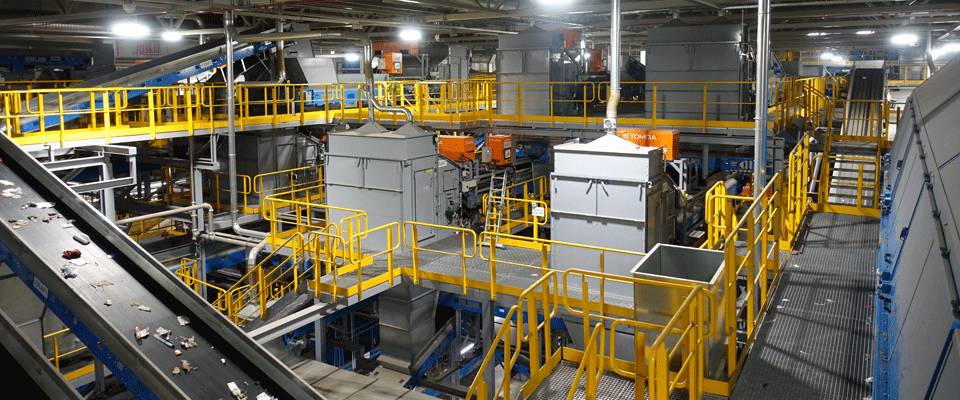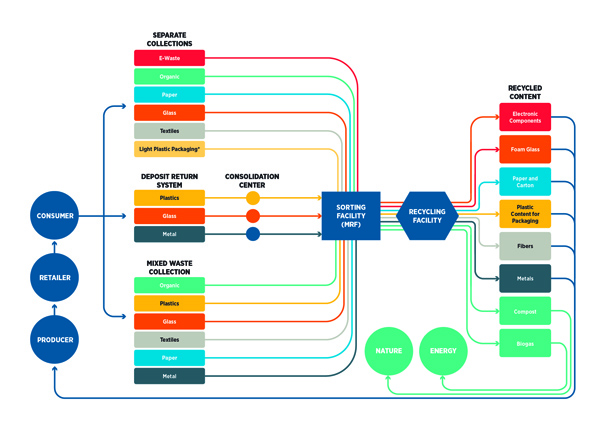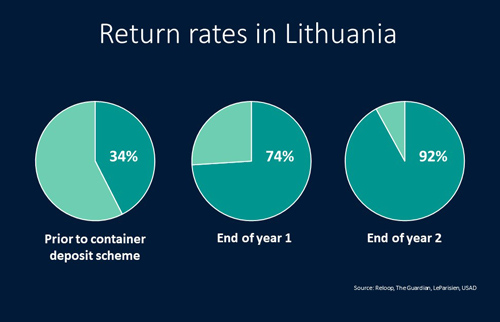This reduction can be achieved using Holistic Resource Systems – the optimized combination of key waste management practices for collection, sorting and recycling to facilitate the transition toward a circular economy, which is preventing resource depletion, reducing littering and contributing to a carbon neutral world.
Holistic resource systems are an ideal combination of political framework regulations, such as extended producer responsibility, deposit return schemes, and technical processes for waste handling. London-based consultancy for sustainability Eunomia, has examined various models to identify the most efficient, cost-effective scenario for a holistic system.
- Deposit return systems for PET bottles and metal beverage containers, which deliver a return rate of over 90%, should play a central role in such a system.
- As regard to remaining household waste, only biowaste, paper, textiles, and electrical and electronic equipment should be collected separately.
- The rest should remain in a mixed waste stream which can be most efficiently separated into reusable materials for further recycling.
This will enable regionally customized holistic models to cut global CO2 emissions by up to 5% - the equivalent of grounding all commercial flights globally and taking 65% of cars off the road.
“Now is the time for real action to ensure societies stop wasting resources with all the related negative consequences. In many places, the pandemic helped to meet Paris Climate Agreement goals,” underlines Volker Rehrmann, Executive Vice President and Head of TOMRA Recycling/Mining & Circular Economy Division. “But even maintaining this level will require determined and consistent implementation, including holistic systems, to close the loops.
- Deposit return schemes (DRS) for PET and metal beverage containers deliver a return rate of more than 90%. They maximize captures of high quality, high carbon-intensity material while reducing litter.
- Separate collections of biowaste, paper, textiles and electrical and electronic equipment (WEEE) enable these materials to be recycled for the greatest carbon benefit. Although separate collections are an intrinsic part of holistic resources, the capture rates in even best practices are not good enough. Further sorting of the residual waste fraction will always be necessary.
- Mixed waste sorting (MWS) generates additional collection and recycling rates above and beyond what the other elements can deliver. The incineration or landfilling of plastics and other high carbon materials generate unnecessary greenhouse gas (GHG) emissions. MWS reduces those emissions and returns more materials to the system for incorporation into new products. MWS needs to be considered an investment priority now, as it is a required backstop to ensure waste management systems capture as many resources as possible for recycling.
To further discuss these concepts and the recently released white paper TOMRA will host a live webcast “Holistic Resource Systems” with Dr. Volker Rehrmann, EVP, TOMRA and guest Joe Papineschi, Chairperson, Eunomia on July 7, 2021 10:30 – 11:30 CET: https://solutions.tomra.com/ce-webcast-registration .
_______________






